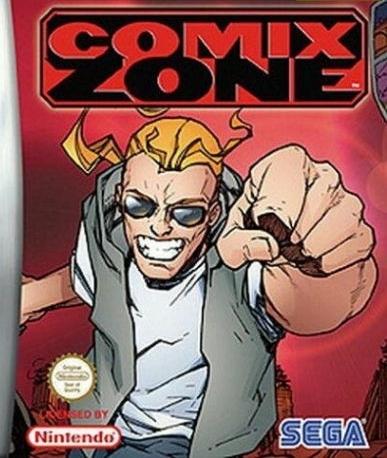


Peter Morawiec: I don’t think so, although I’m sure some people welcomed the split. Sega-16: Do you think things worked better with the Americans doing their own projects while the Japanese did theirs? It would’ve been nice if he gave the “experiment” more time, but I also know how it is when you have a big title to deliver under tight deadlines, so no judgment. So, after Sonic 2 shipped, Naka pulled the plug. Also, to be quite honest, there was disparity in skill levels - the Sonic Team were Sega’s top developers while many of STI’s hires were talented kids with no prior experience (myself included). The westerners had difficulties matching the art style and coding practices of the Japanese, as well as their work ethic (many of those guys would routinely pull overnighters, sleeping on the floor in their cubicles). From what I gathered (and later on experienced firsthand), the main issue was Naka’s sense of ownership over Sonic and his perfectionism. Peter Morawiec: There was a language barrier, and not everyone chose to mingle, but most of the Japanese team members were very friendly. Sega-16: It’s been reported that there were cultural clashes between the Japanese and American teams at STI, which came to a head after Sonic 2 was shipped. Its purpose was to expose Japanese teams to the western culture and “gaming values.” Mark Cerny moved from Japan and set up shop in Palo Alto under the guise of a “training facility” where the Japanese could work and learn alongside their non-Japanese teammates. Peter Morawiec: My understanding was that STI was cooked up by Mark Cerny and Sega executives in Japan. Was this an idea that came from American management? What did the Japanese side of Sega think of it? Sega-16: STI had a lot of autonomy compared to other internal Sega teams. The console was pretty friendly to program for but it took top assembly programmers like Mark, Adrian or Naka to max out its performance, pull off advanced visual tricks, and pack the data tightly (cartridge size greatly affected profitability).
COMIX ZONE HOLD DOWN PC
My PC of choice back than was the Commodore Amiga, which was using the same 16-bit CPU as the Genesis and was graphically pretty advanced, so it was an easy transition for me. Peter Morawiec: As a designer/artist, I never had to do actual programming.

Sega-16: What was it like making the switch from coin-ops to the Genesis? Many programmers have said that the console was easy to program for. I was twenty-two years-old and still remember the excitement! I was finally hired in March of 1992 to join Yutaka Sugano’s ( Shinobi) small coin-op R&D team operating from within STI. I pestered Mark Cerny ( Marble Madness) for a year, sending in all kinds of designs and animations. Peter Morawiec: I did not have any game development experience but I was fascinated with CG and the interactivity of games and very much wanted to break into the business. Sega-16: How did you get your start at Sega? Were you already involved in other games in development, or were you recruited directly into the Sega Technical Institute? Sega-16 recently had the opportunity to speak to Mr. Recently, he’s recently started a new game company called Isopod Labs with his long-time business partner (and Comix Zone programmer) Adrian Stephens. After leaving Sega, Morawiec went on to co-found Luxoflux, which has produced such hits as Vigilante 8 and True Crime: Streets of LA. His involvement didn’t stop there though, and he also designed Sonic Spinball and made contributions Sonic 2. One of the most creative personalities there was a designer named Peter Morawiec, who’s most fondly remembered by Genesis fans for creating the much-beloved Comix Zone. Many of Sega’s biggest and brightest minds passed through the hallowed halls of the STI, including Yuji Naka, Mark Cerny, and Stieg Hedlund. Many developers today would kill for that kind of environment, and it’s something that has somehow never gotten the press it deserved, considering how much the business has evolved since its inception. Imagine a community where Japanese and American developers worked together to create games, with complete autonomy from the management upstairs. The Sega Technical Institute was a unique place in the gaming industry that hasn’t been duplicated since.


 0 kommentar(er)
0 kommentar(er)
